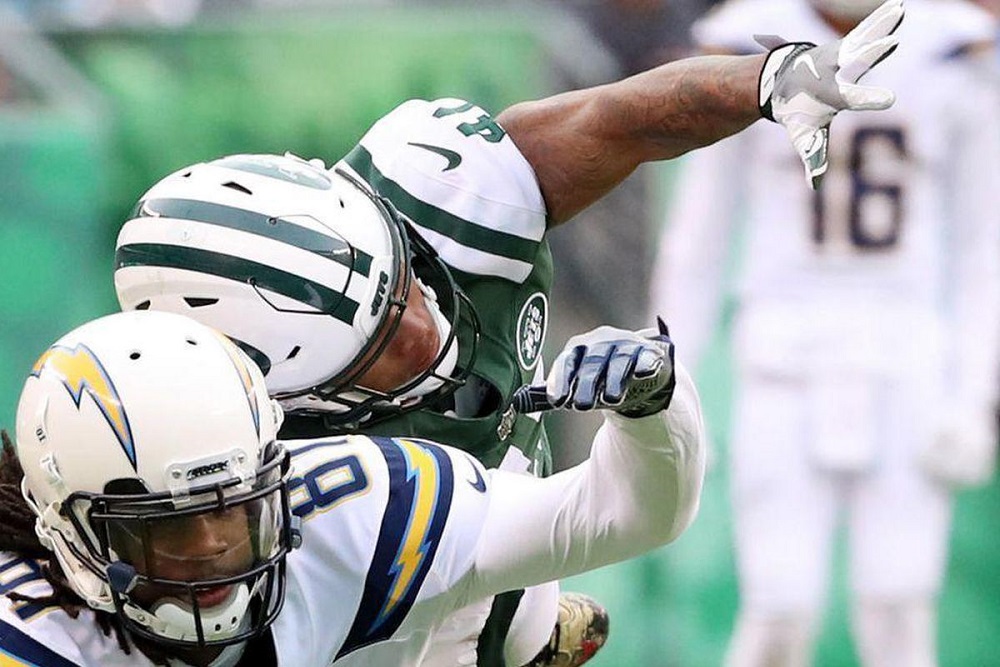
The NFL has a concussion problem. And a protest problem. And a commissioner problem.
Okay, the NFL has a lot of problems, but none of them truly affect the longevity of the sport the way that the concussion issue does. Select players are beginning to retire from the sport early, and kids are being held out of playing the game altogether over concerns of long-term health and issues that may arise from having multiple concussions.
In an effort to fight back, the NFL first tried to deny everything, put together some fake studies saying football is safe, and stuff like that. That, of course, didn’t work out very well. Now, the league seems to be trying to make legitimate strides towards helping its players and looking out for their long-term health and well-being.
[pdf-embedder url=”https://movietvtechgeeks.com/wp-content/uploads/2018/04/nflpa-helmet-types-banned-rawlings-riddell-1.pdf” title=”2018 Helmet Laboratory Testing Performance Results”]
In collaboration with the NFL Players’ Association, the NFL ran lab tests on a number of different helmet models. Based on the results, and for the first time ever, the NFL and the NFLPA have agreed to ban certain types of helmets, ten models total from manufactures including SG Helmets, Rawlings, Schutt, and Riddell.
“The rankings are based exclusively on the ability of the helmet to reduce head impact severity measures in laboratory testing,” read the NFL and NFL Players’ Associations joint poster revealing the findings. “Issues with helmet fit, retention, and long-term durability are not addressed in these rankings. The Top-Performing Group consists of helmets whose performance was not statistically different from the two top-ranked helmets. The information presented here is based solely upon the results of this research and the expert opinions of the scientists involved.”
Starting in 2018, players that haven’t worn one of these ten helmet styles in the past will not be allowed to wear them for the season. And, I mean, if they have worn them in the past, they should probably consider switching helmet styles considering the NFL just banned anyone else from making the same mistake.
With all the changes that have occurred in the sports science industry within just the past few years, it’s hard to believe the NFL is only now getting around to testing specific helmet models and making the decision to ban underperforming models from players’ heads moving forward. But, hey, at least they’re getting to it.
“Over the last few years, we’ve seen some dynamic changes in the helmet industry,” said NFL executive vice president of health and safety initiatives Jeff Miller. “We’ve seen a number of new helmets enter the market from both new innovators, as well as new helmet models from incumbent companies, which means that there are a number of helmets for players to move to.”
Of the best performing helmets in the study, the top two are manufactured by VICIS, a company that has only been around since 2013, showing the strides that innovation and technology have made in protecting players’ heads. Now, hopefully, the players will take notice and don some VICIS helmets in 2018.
“And we’ve begun to see that over the last couple of years, players [are] moving from helmets that rank in the poorly performing areas to those that are ranging closer to the top-performing helmets,” continued Miller. “We think that is an important move, and we think that will improve player health and safety. And the purpose of continuing to rank the helmets, and the purpose of the joint decision to prohibit certain helmets this year, is to increase that continued movement into better-performing helmets.”
Overall, the NFL is making steps in the right direction, but they need to do so much more to protect their players from head injuries in the present (thus, protecting their future). Not only is it the right thing to do but also assists with the brand image and public opinion for years to come. The NFL isn’t too big to fail, and it needs to protect itself the way any other business does.
In the study, the NFL tested 34 helmets, finally deciding to put together a black list for the sport’s most important piece of equipment one year after witnessing 291 concussions in 2017, the most they’ve ever recorded.
The study recreated some of the motions and actions that a player will perform and experience while on the football field. The helmets were ranked based on their ability to “manage the forces” that the scientists tested for, simulating a real football field.
And, no, the NFL didn’t rig these like it did with concussion testing and research in the past. The NFLPA sent its advisor, Dr. Kristy Arbogast to help carry out the tests to make sure there was no funny business.
After all, you know how ole Roger Goodell is. It’s hard to trust the man when it comes to science.

